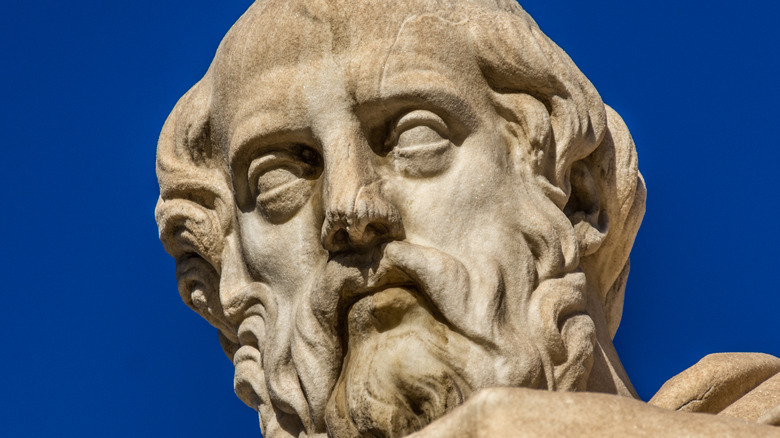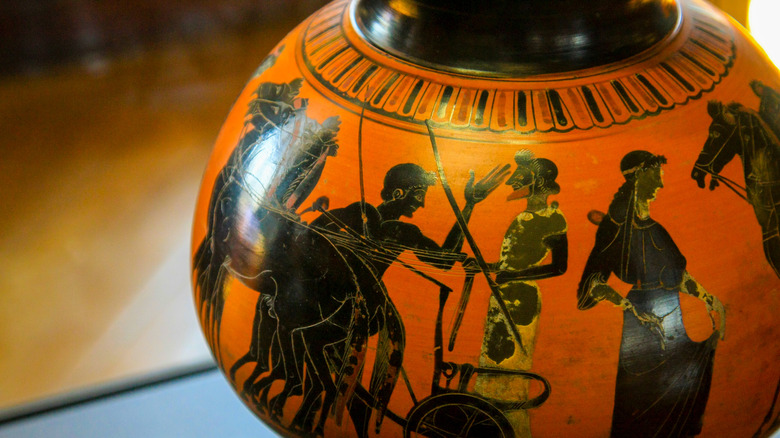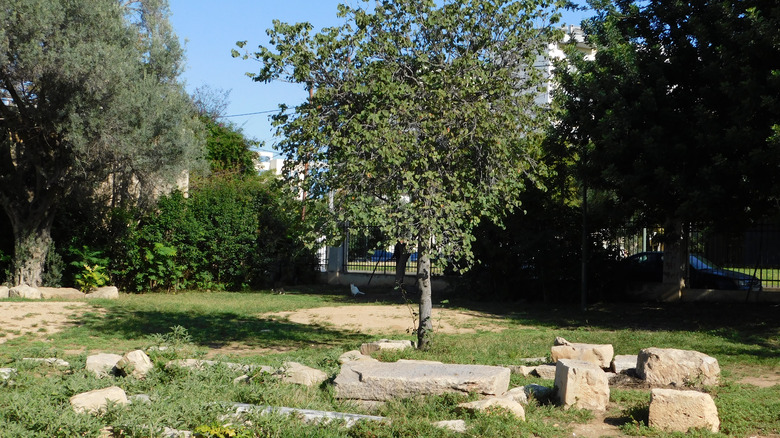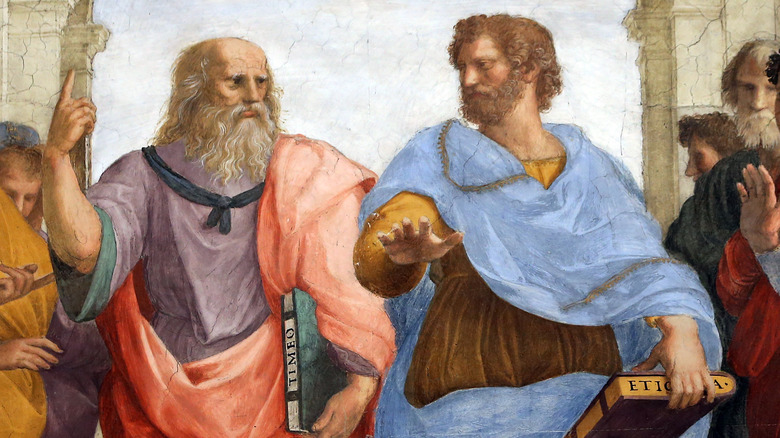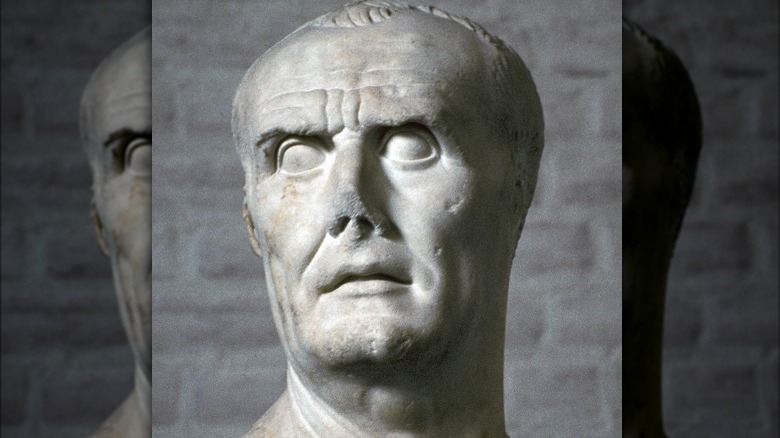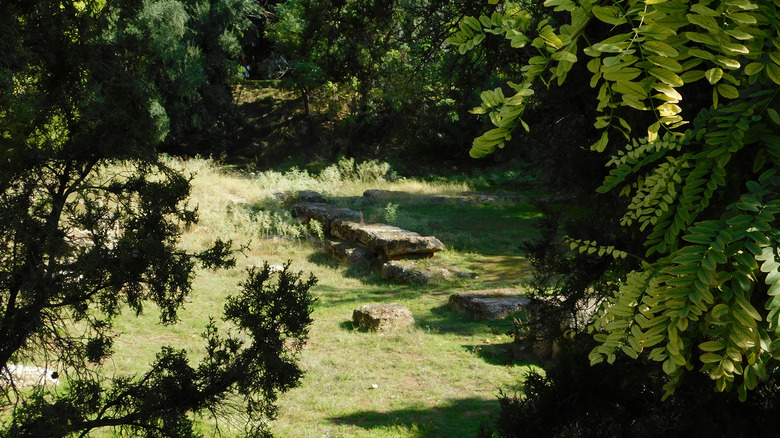What Happened To Plato's School, The Academy?
When we say "academy," we don't have a specific academy in mind: it could be the American Film Academy, or the Academie Française, or a neighborhood school. We even use it generally, usually as "academia," to refer to universities or the social caste that works in them. In any case, we use the word to mean some kind of school or intellectual guild.
Few people know, however, that all the academies of the world are named after the Academy, a specific place. The Academy was the spot in Athens where the philosopher Plato held his classes. As the famous quip by A.N. Whitehead goes, "the European philosophical tradition ... consists of a series of footnotes to Plato" (per Philosopher's Magazine). The original Academy, in other words, was the cradle of our intellectual tradition. And yet today, only the barest traces of the Academy exist. We know where it was; we can only guess what it once was like.
A garden in Athens
As the Internet Encyclopedia of Philosophy describes, Athens in the 400s B.C. was home to a number of competing philosophical schools. These were literal schools, not just schools of thought. Young men would gather to hear lectures from a philosopher, or group of philosophers of the same tradition. The "classes" were often held on the outskirts of the city proper, sometimes in outdoor gymnasia, where men gathered to wrestle or practice other sports. (Per Britannica, "gymnasium" still means school in many languages, including German.)
The students of Plato, including the young Aristotle and intellectuals from across the far-flung Greek world, met at a place called the Academy. Plato, a former student of Socrates, never mentioned the Academy by name. Our main source is the historian Diogenes Laertius, who wrote a biography of Plato. According to Diogenes, the Academy was a clearing in a grove of trees where men exercised; it had been named after a hero called Hecademus, who was otherwise completely forgotten (via "Lives and Opinions of Eminent Philosophers," posted at Project Gutenberg). Plato gave lectures there while still in his 20s, but didn't make it his permanent location until after his long travels in Egypt and Italy, when he was in his 30s.
Where the plane tree whispers to the elm
Incredibly, we know where the Academy stood — a few stone blocks mark the site of its wrestling pit, its small temple, its shaded walkway, and the tombs of soldiers who had died fighting the Persians at Marathon. It seems, from modern photos like the one above, to have preserved its dreamy serenity. Diogenes called it "shady" and remarked at its gentle, singing cicadas. An interesting quote from the comedian Aristophanes, a contemporary of Plato who lampooned Socrates, evoked the Academy's drowsy beauty in one of his plays: "You will go down to the Academy, under the sacred olive-trees ... fragrant with green-brier and catkin-shedding poplar and freedom from cares, delighting in the season of spring, when the plane tree whispers to the elm" (via Internet Encyclopedia of Philosophy).
There's a chance Plato had the Academy in mind when he wrote his dialogue "Phaedrus." "Phaedrus," an exploration of ideal love, is set in "a fair resting-place" by a plane tree, "full of summer sounds and scents" (via MIT). "How delightful is the breeze," says Socrates, "so very sweet; and there is a sound in the air shrill and summerlike which makes answer to the chorus of the [cicadas]. But the greatest charm of all is the grass ... I do indeed believe that you have found a spell with which to draw me out of the city into the country."
At last an institution
Plato seems to have acquired the Academy as his own property. The circumstances of this acquisition aren't clear, but Diogenes offers some interesting explanations. According one story, Plato was arrested on the island of Aegina, where any Athenian who set foot on land would be sentenced to death. A wealthy friend named Dion sent money for his ransom, but it wasn't necessary: Once the Aeginians realized who Plato was, they sent him home, and Plato used the ransom money to buy the grove where he taught.
When Plato died in 347 B.C., his students had him buried in the Academy. (Two of those students were women, according to Diogenes, although they may have dressed like men.) Strangely, there is no explicit mention of the Academy in Plato's will. But in any case, the Academy became an institution, with Plato's students teaching the next generation as Plato himself had succeeded Socrates. A monument to Plato was erected nearby.
As the Internet Encyclopedia of Philosophy reports, the Academy went through various stages over the next two centuries, with the doctrine changing generationally. But the students continued to meet in the shade of the actual Academy.
Decline and ruin
Everything changed in the year 86 B.C. Two years earlier, the Roman consul Lucius Cornelius Sulla (above) had led a Roman army to march on Mithradates, king of Pontus in Asia Minor (per Britannica). The Kingdom of Pontus had occupied mainland Greece, which made Athens a key strategic objective for Sulla's legions. They reached Athens in 88 B.C.; after two years of siege they sacked the city and its surrounding countryside. The marauding Romans burned the Academy, smashing down its buildings (including Plato's monument) and scattering the scholars. None of the other schools, including Aristotle's competing Lyceum, was spared.
The Academy did not exactly die, though. It fragmented, and scholars began holding classes elsewhere in Athens, purporting to be the true heirs of Plato. The Internet Encyclopedia of Philosophy notes that into the 500s A.D. — when Rome had fallen and the Middle Ages started — a few independent "Platonist" and "Academic" schools were still operating in Athens. The Emperor Justinian closed them definitively in 529.
That's not quite the end of the story, though. A few of the scholars, like Plotinus, would go on to form a new philosophy: Neoplatonism, which combined Plato's thought with Christian, Jewish, and gnostic mysticism. Neoplatonism became the house philosophy of the Italian Renaissance, inspiring artists like Botticelli and Michelangelo.
Visiting the Academy today
It would have been all too easy for someone, in the 1,500 years since the Academy (or Academies) closed, to build over the Academy itself. The city of Athens has grown and shrunk over time, which meant new houses have had to go up, and old places repurposed. (William E. Wallace's 2010 biography of Michelangelo notes that well into the 16th century, many architects saw ancient ruins as quarries for marble, unworthy of preservation.)
For whatever reason — local lore, or maybe the atmosphere of the place — the Academy never suffered such a fate. No one built over it. You can, in fact, visit it today.
This Is Athens has photos and maps of the city park that contains Plato's Academy. It's just off Drakontos Street, about 45 minutes northwest of Syntagma Square by foot, and beside the outdoor park (shown above) there's a digital museum onsite. Appropriately, there's a football pitch just next to it. The gymnasium lives on.
